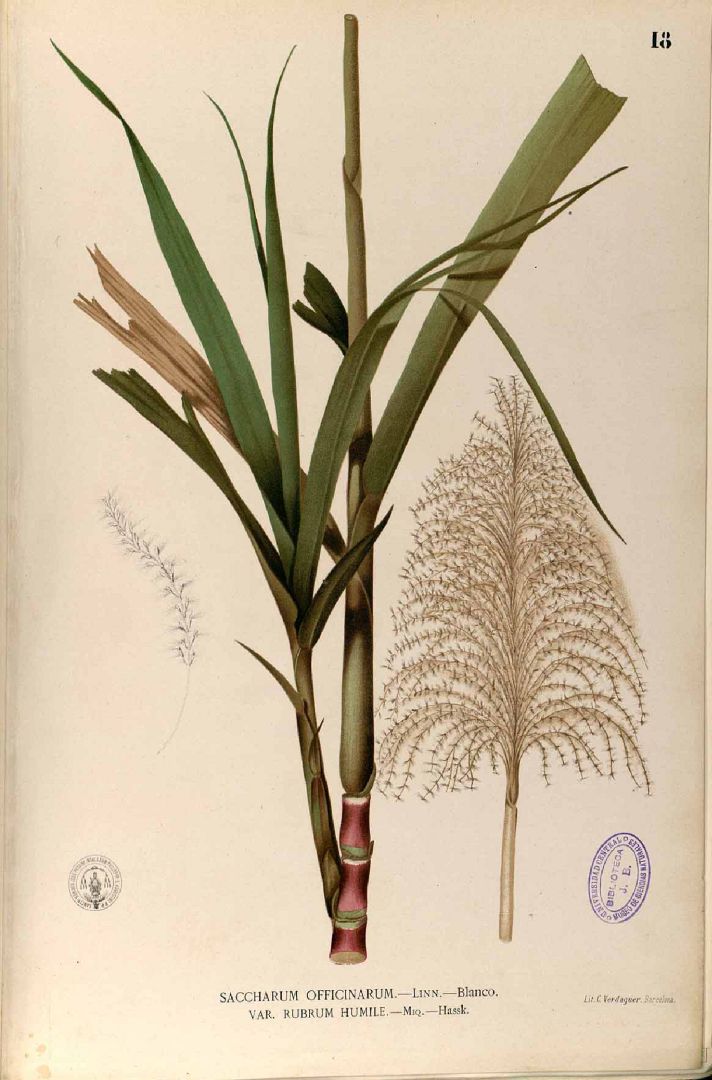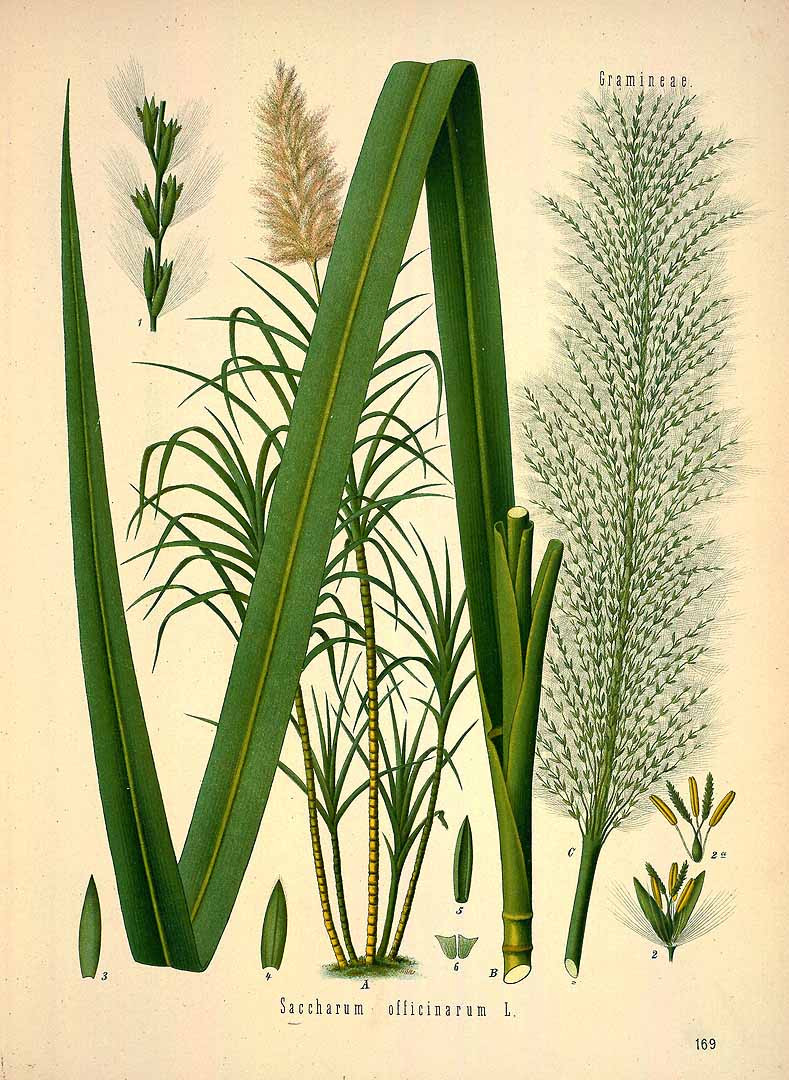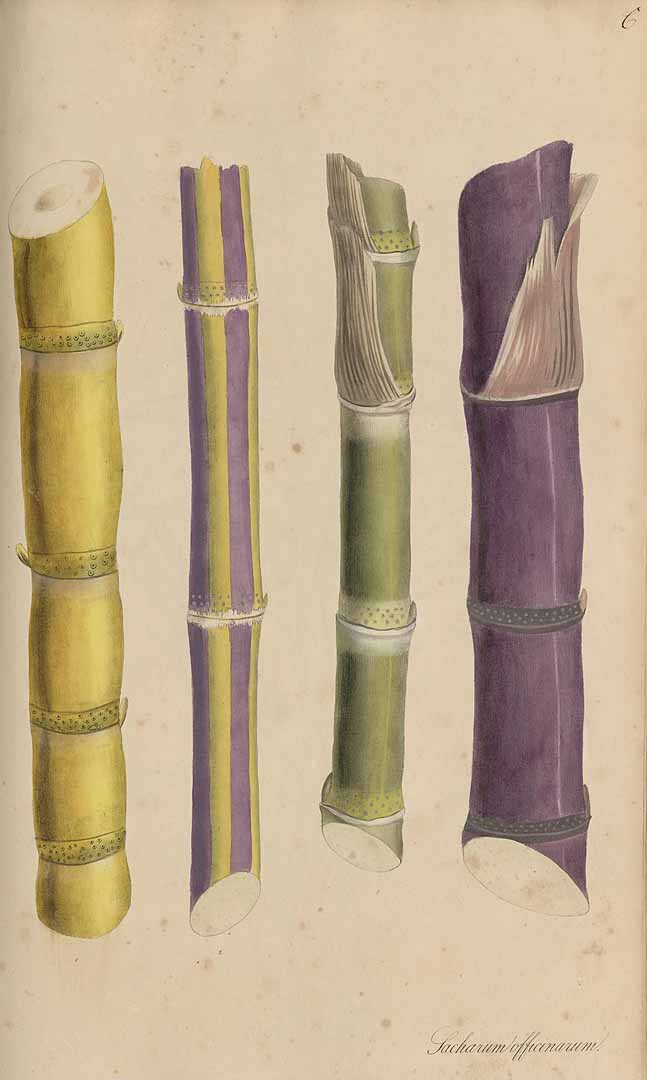! Nouveau site ici !
Vita > Plantae > Magnoliophyta > Liliopsida > Cyperales >
Poaceae > Saccharum
Saccharum officinarum
(Canne à sucre)

****
Vita > Plantae > Magnoliophyta > Liliopsida > Cyperales >
Poaceae > Saccharum
Saccharum officinarum
(Canne à sucre)

****
Une grande herbe grumeleuse à tige épaisse. Il a de nombreux nœuds. Il atteint 1 à 6 m de haut. Il s'étend sur 100 cm de large. Il existe un grand nombre de variétés cultivées différentes. Les feuilles... (traduction automatique)
→suite
⬀
Le  donne accès au menu
donne accès au menu (c'est votre point de repère) 😊 ;
En dessous vous avez la classification, à partir de la vie (Vita, premier rang) jusqu'à la classe au dessus de la plante, dont vous trouvez ensuite le nom scientifique/botanique (latin) puis le nom commun (français), le cas échéant ;
C'est aussi un lien vers la fiche complète (tout comme la ✖, en bas à droite, et le +, en dessous de la description) ;
Vient alors l'illustration (ou ce qui la remplace, en attendant), la comestibilité :
Et en bas
⬂







